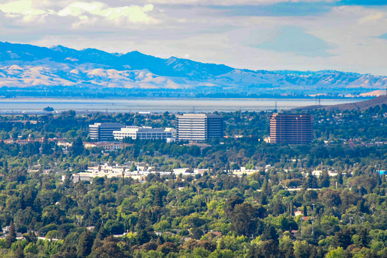Many permanent residents are anxiously waiting to become naturalized United States Citizens, thinking that U.S. citizenship will get their children here faster. Unfortunately for Filipinos, naturalization often does just the opposite, increasing the waiting period up to 30 years or more.
After a person becomes naturalized that person becomes eligible to file visa petitions for everyone in his or her family, even married children. This makes naturalization look like the easiest way to bring your family here from the Philippines. Unmarried children under 21 have visas immediately available to them as Aimmediate relatives of the petitioning U.S. citizen. However, unmarried children over 21 and married children are subjet to the quota system.
Until December 1985 the quota for unmarried children over 21 (the F-1 category formerly called the P-1 category) was current which means these children could immigrate immediately. However, the F-1 category has not been current for the Filipinos since 1985. People who think their naturalization will help immigrate their children here earlier are using 10 year old out dated information. Currently, the quota for the first preference has a 10 year backlog and is only moving about 3.2 months per year. At this rate I estimate that the beneficiary of F-1 visa petition filed now will not be able to immigrate for 36 years.
Many Filipinos Who Naturalized Find Themselves Caught-up in This Nightmare. But There May Be A Way Out For A New Few Lucky Ones. First, in order to understand how this problem came about it is necessary to know about the quota system and how it has been affected by recent legislation. Under the quota system Congress designates a certain number of visas to be available each year for each preference category and a maximum per country.
For example, a certain number of visas are available every year to unmarried children of U.S. Citizens over 21 years old (the F-1 category). A certain number of visas are also allotted for spouses and unmarried children of Permanent Residents (the F- 2 category) and so on. If a preference category does not use all of its visas, the visas Aspill over into the next lower preference category.
The problem faced by Filipinos is that since December 1985 the number of first preference family members waiting to immigrate to the U.S. exceeds the number of visas available. This situation continues to deteriorate and the backlog continues to increase.
This problem was made even worse by the Immigration Act of 1990 (IMMACT 90) which reduced the availability of first preference visas in order to make more visas available to the spouses of permanent residents. This disproportionately affected the Philippines and incidentally coincided with the closing of the bases in the Philippines. Before IMMACT 90 the spouses of permanent residents had to wait several years before joining their spouses in the United States. Now that more visas are available in the second preference category, the waiting period was reduced, but now is increasing.
However, in helping permanent residents reunite with their spouses, the quota for first preference visas was drastically reduced. It is now virtually impossible for U.S. citizens to bring their Filipino children to the U.S. if they are over 21 unless the other parent is still a Permanent Resident and a new visa petition is filed. Split Families A direct result of this backlog problem is the Asplit family situation. That is where there are some unmarried children under 21 and some over 21 years old.
In split family cases Permanent Residents, currently eligible to be naturalized, are presented with a very difficult choice. If they choose to get naturalized now, their unmarried children under 21 can come to the United States within a couple of months. However, their unmarried children over 21 will have to wait up to 36 years to join their family in America and may immigrate only if the petitioning parent is still alive 36 years from now.
The solution to this problem is to petition your unmarried children now (immediately) while a permanent resident. Spouses and children of permanent residents are also subject to the quota system and come under the F-2 (formerly P-2) preference. The waiting period for F-2B visas (unmarried children over 21) is much shorter than the F1 category. In other words, by not becoming a naturalized U.S. citizen, the children under 21 may have to wait only a few years longer to immigrate, however, by remaining a permanent resident the wait for unmarried children over 21 will be shortened by many years.
Unfortunately, this strategy does not help married children. Only U.S. Citizen can petition their married children. Because of this, many Filipinos, despite all the disadvantages, may want to become naturalized, hoping this will allow their married children to immigrate. However, married children of U.S. Citizens are also subject to the quota system and fall under the third preference (F-3 formerly P-4).
The waiting period for the family third preference is currently about 15 to 20 years. In other words becoming naturalized is really not too much help. Although there may be some other ways to help your married children (for example, an employment-based visa petition) a family petition from a U.S. Citizen parent cannot help them and will only hurt other children who qualify under the second preference.
Many Filipinos may want to become naturalized so that they do not lose their government benefits. This, of course, is a good reason but one needs to make a decision between immigrating their child or keeping their government benefits. When a permanent resident becomes a naturalized U.S. Citizen, any visa petition filed for unmarried children over 21 (the f-2 visa petition) automatically converts to the F-1 category pursuant to the Code of Federal Regulations [8 C.F.R. 204.2 (h) (3)]. This will result in a substantial increase of the waiting period for the petitioned children. Anywhere from a few years to more than 30.
If you try to just change the category for those children under 21, and leave the children over 21 in the F-2 category, the Visa Processing Center=s computers will find all of the petitions and may reclassify all of them. Can we Still Proceed Under the F-2 Even If there An Automatic Conversion Of the Preference Category.
First of all you can avoid this entire disaster even if you have already filed for naturalization by simply withdrawing your naturalization application even if it is already been approved and you are just waiting for the oath-taking. Even if you are already naturalized, help may still be available. Lets say you were not warned and are already naturalized. It is still possible in some cases to immigrate your children over 21 through the original F-2 category. Although this is a very difficult situation, the Law Offices of Robert L. Reeves has been able to help in approximately 25% of the cases.
Everybody dreams of having a family where all the members live close enough to each other to share the joys and sorrows of life. The information set forth in this article is provided to help reunite spouses and unmarried children and avoid disastrous decisions. A mistake in this area may result in permanently separating the family forever. Obviously, it makes good sense to consider all of your options before you file an application for naturalization and even if you are already naturalized an expert in this area may still be able to help.





